Panasonic Lumix DMC-LX2 Review
Review Date: October 10th 2005
Leave a Comment about this Review
|
Image Quality
All of the sample images in this Review were taken using the 10M Fine mode, which gives an average image size of around 4Mb - 5Mb.
Noise
There are 5 ISO settings available on the Panasonic Lumix DMC-LX2 which you can select at any time if the camera is in any of the manual exposure modes. Here are some 100% crops which show the noise levels for each ISO setting:
ISO 100 (100% Crop) |
ISO 200 (100% Crop) |
 |
 |
ISO 400 (100% Crop) |
ISO 800 (100% Crop) |
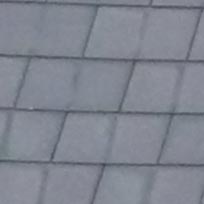 |
 |
ISO 1600 (100% Crop) |
|
 |
|
There is virtually no discernible noise at the slowest setting of ISO 100. Some noise starts to appear at ISO 200, but it's still a usable speed. At ISO 400 image quality has deterioated quite a lot as the camera blurs detail to try and hide the noise, with ISO 800 even worse. You should avoid using ISO 1600 if at all possible.
High Sensitivity Mode
The Panasonic Lumix DMC-LX2 has a High Sensitivity scene mode which promises to reduce blurry images, particularly of moving subjects indoors, by raising the ISO speed to a maximum of 3200 and therefore allowing for a faster shutter speed. This mode allows you to handhold the camera without using the flash and get more natural results, whilst at the same time freezing subject movement more successfully. There are some obvious drawbacks with this special scene mode, notably a significant reduction in resolution - Panasonic state that "The picture quality is good enough for printing at the ordinary 4" x 6" (10 x 15 cm) size". You also need to select the scene mode and therefore have some idea about when it is applicable to your subject. Here are some 100% crops which show the noise levels:
| High Sensitivity Mode |
High Sensitivity Mode (100% Crop) |
Sharpening
Here are two 100% crops which have been Saved as Web - Quality 50 in Photoshop. The right-hand image has had some sharpening applied in Photoshop. The out-of-the camera images are a little soft at the default sharpening setting of Standard and benefit from some further sharpening in a program like Adobe Photoshop. Alternatively you can increase the in-camera sharpening by choosing the High option.
Original
(100% Crop) |
Sharpened (100% Crop) |
 |
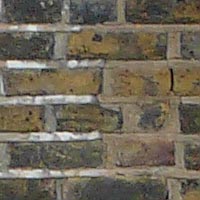 |
 |
 |
File Quality
The Panasonic Lumix DMC-LX2 has 2 different JPEG image quality settings, with 10M Fine being the highest quality option. There's also a RAW option. Here are some 100% Crops which show the quality of the various options, with the file size shown in brackets.
| 10M
Fine (4.69Mb) (100% Crop) |
10M
Normal (2.37Mb) (100% Crop) |
 |
 |
| 10M
RAW (19.57Mb) (100% Crop) |
|
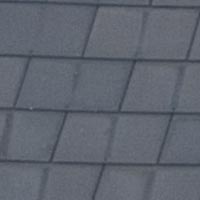 |
|
Chromatic Aberrations
The Panasonic Lumix DMC-LX2 handled chromatic aberrations quite well during the review, with some purple fringing present around the edges of objects in very high-contrast situations (particularly with trees against a bright white sky).
| Example
1 (100% Crop) |
Example
2 (100% Crop) |
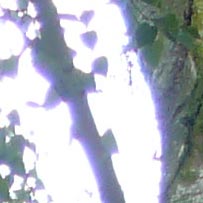 |
 |
| Example
3 (100% Crop) |
|
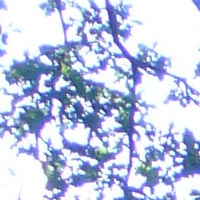 |
|
Macro
The Panasonic Lumix DMC-LX2 offers a Macro setting that allows you to focus on a subject that is 5cms away from the camera. The first image shows how close you can get to the subject (in this case a compact flash card). The second image is a 100% crop.
| Macro |
Macro (100% Crop) |
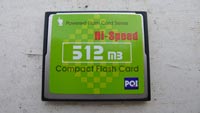 |
 |
Flash
The flash settings on the Panasonic Lumix DMC-LX2 are Auto, Red-eye Reduction, Forced Flash, Suppressed Flash, Slow Synchro. and Red-eye Reduction + Slow Synchro. These shots of a magnolia coloured wall were taken at a distance of 1.5m.
| Flash Off - Wide Angle (28mm) |
Auto Flash - Wide Angle (28mm) |
 |
 |
| Flash Off - Telephoto (112mm) |
Auto Flash - Telephoto (112mm) |
 |
 |
And here are some shots of yours truly. As you can see, both the Flash On setting and the Red-Eye Reduction option caused a tiny amount of red-eye (or to be more accurate, purple-eye).
| Flash On |
Flash On (100% Crop) |
 |
 |
| Flash - Red-Eye Reduction |
Flash - Red-Eye Reduction (100% Crop) |
 |
 |
Night Shot
The Panasonic Lumix DMC-LX2 maximum shutter speed is 60 seconds in the Manual exposure mode, which is great news if you're seriously interested in night photography. The shot below was taken using a shutter speed of 30 seconds, aperture of f/8 at ISO 80. I've included a 100% Crop of the image to show what the quality is like. Unfortunately, as you can see, the results even at the slowest ISO 100 are very noisy with a lot of detail lost.
| Night Shot (click to view full-sized image) |
Night Shot (100% Crop) |
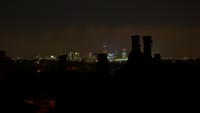 |
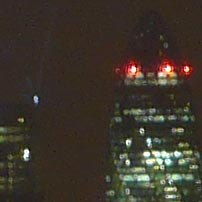 |
Anti Shake
The Panasonic Lumix DMC-LX2 has an anti-shake mechanism, which allows you to take sharp photos at slower shutter speeds than other digital cameras. To test this, I took 2 handheld shots of the same subject with the lens set to the same focal length, aperture and ISO speed. The first shot was taken with anti shake turned off, the second with it turned on. Here is a 100% Crop of the image to show the results.
| Shutter Speed | Anti Shake Off (100% Crop) |
Anti Shake On (100% Crop) |
| 1/8th |  |
 |
| 1/50th | 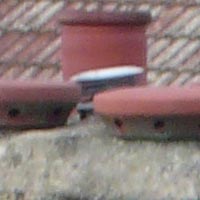 |
 |
As you can see, with anti shake turned on, the images are much sharper than with anti shake turned off. This feature really does seem to make a difference and could mean capturing a successful, sharp shot or missing the opportunity altogether.
Aspect Ratios
The Panasonic Lumix DMC-LX2 offers 3 different aspect ratios; the following images give you an idea of exactly what is captured at each setting.
| 16:9 |
 |
| 3:2 |
 |
| 4:3 |
 |
Overall Image Quality
The Panasonic Lumix DMC-LX2 produced images of average quality during the review period. The 10 megapixel images were a little soft straight out of the camera at the default sharpen setting of Standard and either require some further sharpening in an application like Adobe Photoshop, or you should set the in-camera sharpening to High. The Panasonic Lumix DMC-LX2's dealt quite well with chromatic aberrations, with limited purple fringing effects appearing only in very high contrast situations. Macro performance is average, allowing you to focus as close as 5 cms away from the subject. The built-in flash worked OK indoors, with little red-eye and good exposure. The night photograph was poor, with the maximum shutter speed of 60 seconds allowing you to capture plenty of light, but images that didn't have much detail due to lots of noise. Anti-shake is a feature that sets this camera apart from its competitors and one that works very well when hand-holding the camera in low-light conditions or when using the telephoto end of the zoom range. The Panasonic Lumix DMC-LX2's main drawback in terms of image quality, however, is noise. The 10 megapixel sensor used in the Panasonic Lumix DMC-LX2 may result in larger images, but it comes at the cost of noisy images even at the slower ISO settings. ISO 100 looks fine, but there's already some noise evident at ISO 200, which isn't exactly a quick speed, and by ISO 400 details is blurred as the camera tries to hide the noise. ISO 800 and 1600 are both something of a last resort.
|
 PhotographyBLOG
is a member of the DIWA
organisation. Our test results for the Panasonic Lumix DMC-LX2
have been submitted to DIWA
for comparison with test results for different samples of
the same camera model supplied by other DIWA
member sites.
PhotographyBLOG
is a member of the DIWA
organisation. Our test results for the Panasonic Lumix DMC-LX2
have been submitted to DIWA
for comparison with test results for different samples of
the same camera model supplied by other DIWA
member sites.




